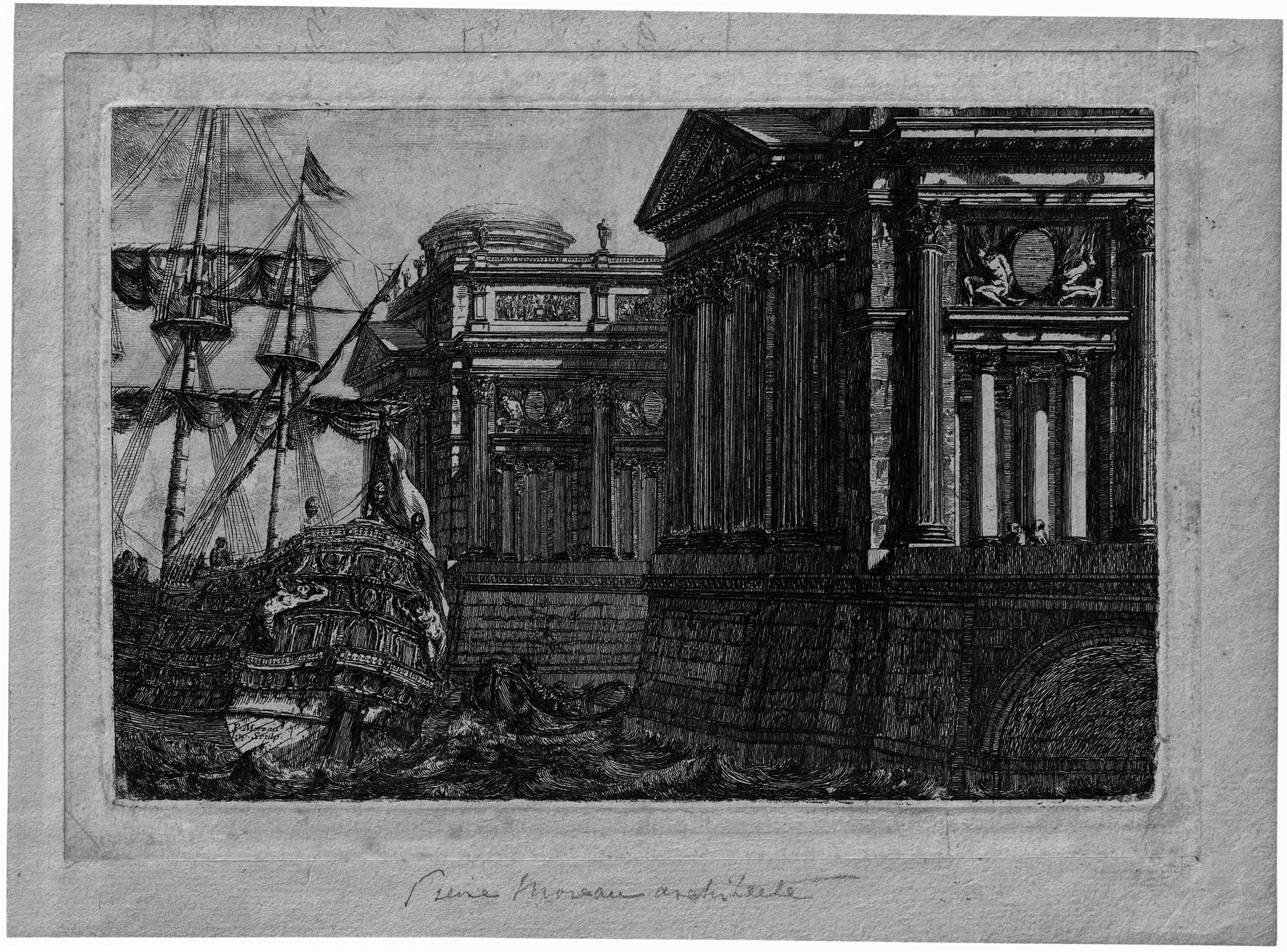Loading the page ...
Pierre Moreau
(circa 1715/20–1762, Paris)
Architectural Capriccio with a Ship Entering a Port. Etching. 13.2 x 19.9 cm. Circa 1760. Le Blanc from 1; Perrin Stein, Artists and Amateurs. Etching in 18thcentury France, New York 2013, p. 188, no. 22, fig. p. 45; Piranèse et les Français 1740-1790, Rome 1976, no. 123.
Pierre Moreau, who hailed from Paris, enrolled at the Académie d’Architecture in his native city and studied under the architect and draughtsman, Germain Boffrand. In 1743 his design for a chapel won him the prize for architecture and he subsequently continued his studies at the Académie de France in Rome, where he worked as a pensionnaire from 1746. During his lengthy stay in Italy Moreau was admitted to the academies in Florence and Bologna. After returning to France the artist turned his attention increasingly to the graphic arts. He produced a series of architectural designs and capriccios which were published in various suites and architectural volumes.
The present sheet with the depiction of an imaginary port framed by two splendid monumental buildings comes from the Recueil de plusieurs parties d’architecture de différents maîtres tant d’Italie que de France published in 1765 by the architect and etcher, Gabriel Pierre Martin Dumont. It is one of four inter-related prints which – embedded in scenes with imposing imaginary structures – show the removal of a body from a crypt and its transfer to a sailing ship. The three-masted, richly decorated ship appears quite fragile compared to the dark, impressive palace rising up out of the choppy waves, particularly with its starboard side perilously close to the massive foundation walls. Moreau’s etching technique is characterised by dark, dense hatching with only a few light areas and by the delicate and intricate elaboration of the details. The idiosyncratic composition and Moreau’s highly individual style, which is clearly inspired by the works of Stefano della Bella and Piranesi, give this unusual etching a special visual charm. The rare little print is on offer in the first state before the number and before the reworking, for example of the columns in the right foreground. A very fine, strong impression with narrow margins. Only minor ageing and signs of handling, otherwise in very good condition.
Contact us for further information